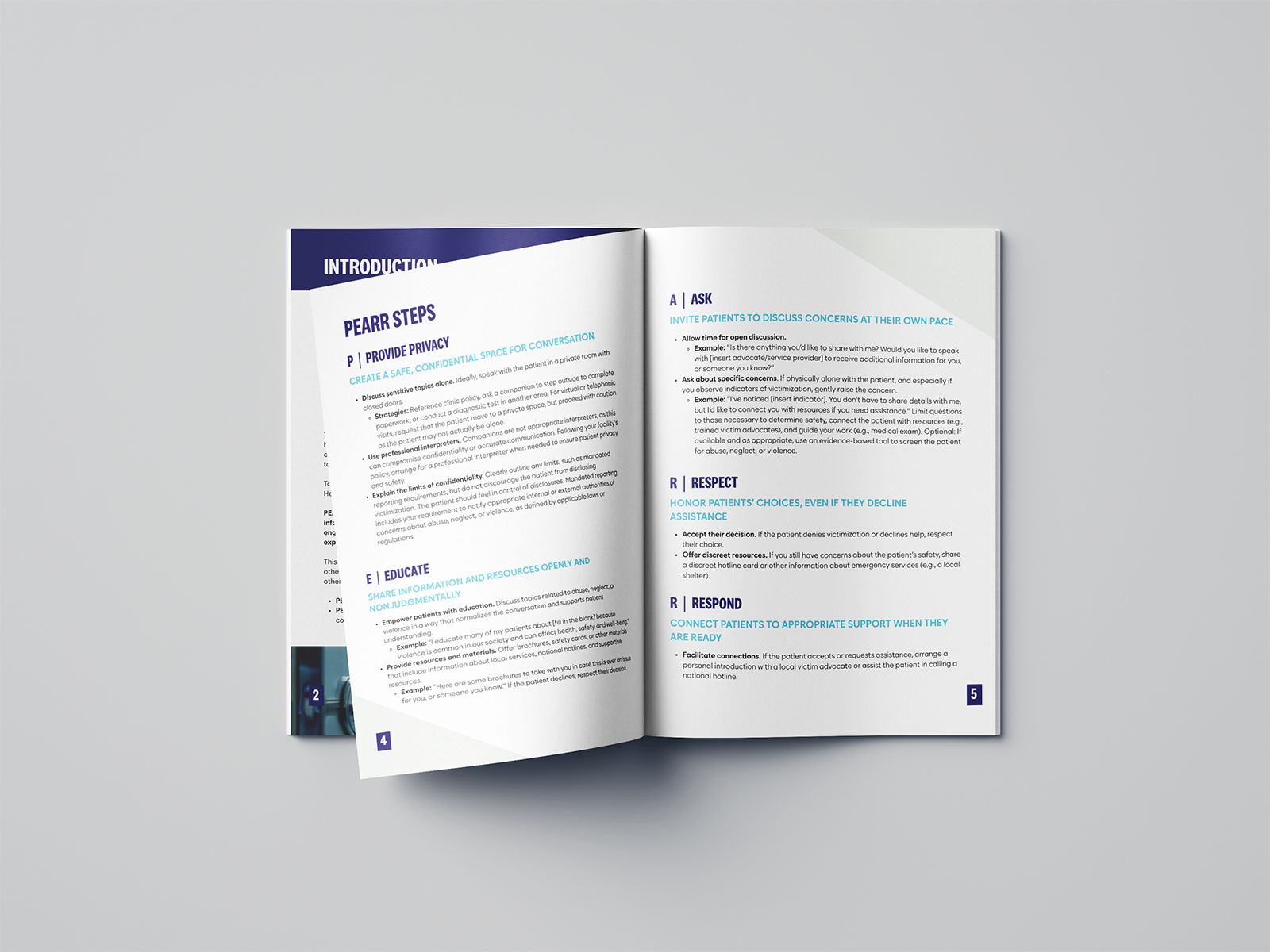Updated PEARR Tool: Practical, Trauma-Informed Guidance for Healthcare Providers
The PEARR Tool and new Quick Guide streamline trauma-informed conversations with patients impacted by human trafficking and violence.

Meet the Updated PEARR Tool
The PEARR Tool—developed by CommonSpirit Health, HEAL Trafficking, and the Pacific Survivor Center—offers a structured, patient-centered framework to guide trauma-informed conversations with patients who may be impacted by human trafficking and other forms of interpersonal violence.
What’s New in This Update
- Quick Guide for Fast-Paced Settings: A concise, printable reference designed for busy clinical environments (badge-friendly, easy to scan).
- Streamlined Readability: The full tool has been reformatted and clarified for easier navigation and application in practice.
- Long-Term Accessibility: This refresh helps ensure the tool remains usable and widely adoptable across diverse care settings.
Why PEARR Matters
Too often, “screening mode” can feel like a checklist that is impersonal or retraumatizing. The PEARR framework centers trust, safety, and open dialogue—key components of trauma-informed, survivor-centered care. It supports clinicians in recognizing red flags, responding safely, and connecting patients to appropriate resources.
“The PEARR Tool offers something different: a framework that prioritizes trust, safety, and open dialogue. This update makes it even easier for providers to engage in patient-centered conversations that truly support healing.”
— Hanni Stoklosa, MD, MPH, Chief Medical Officer
Who Should Use the PEARR Tool
- Healthcare providers across clinical disciplines and settings
- Social workers, behavioral health clinicians, and care coordinators
- Public health, advocacy, and community-based professionals partnering with healthcare
How to Integrate PEARR Into Practice
- Print or save the Quick Guide for shift-ready reference.
- Incorporate PEARR steps into your intake and patient-flow protocols.
- Practice language that aligns with PEARR (e.g., normalizing statements, consent-based questions).
- Identify referral pathways for safety planning, advocacy, and follow-up care.
- Share the tool with your teams and include it in onboarding and continuing education.
Acknowledgments
The PEARR Tool was first developed by CommonSpirit Health, HEAL Trafficking, and the Pacific Survivor Center. We are grateful to the clinicians, survivor leaders, and partners whose feedback and practice insights informed this update.

